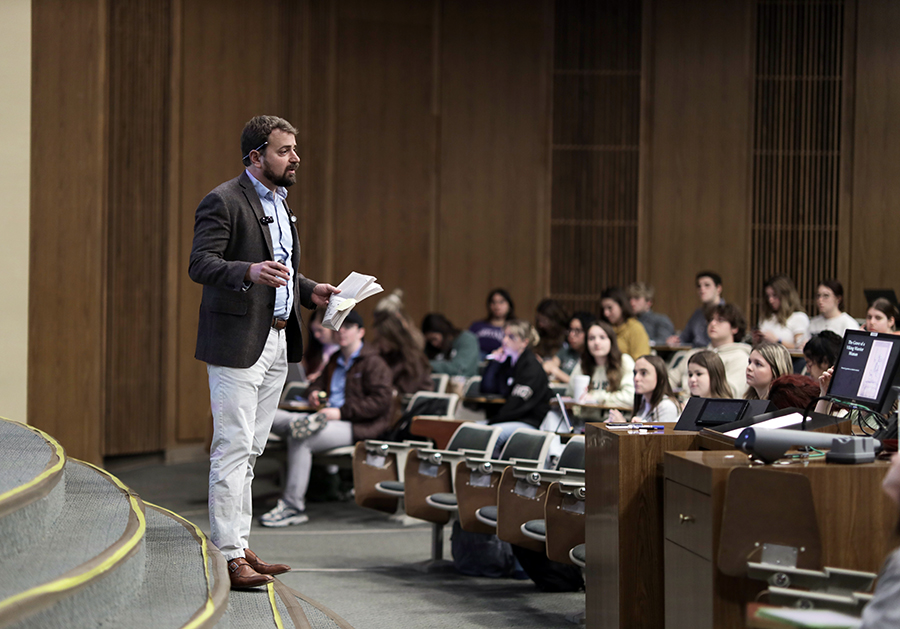World Cultures
THE WORLD CULTURES sequence, a five-course humanities sequence, offers students selective explorations of the human story from the emergence of civilizations to the present. Students use texts, works of art, examples of urban design and architecture, and other artifacts that represent the diversity of human voices to explore philosophical, religious, political, educational, artistic, literary, economic, and scientific dimensions of human experience. The World Cultures courses emphasize the connectedness of these various dimensions and develop reading, writing, oral communication, interpretive, and thinking skills. Each World Cultures course is structured to enhance students' historical consciousness and uses discussion groups that focus on the in-depth exploration of primary texts. Faculty from the College of Arts & Sciences (the departments of History, Modern Foreign Languages, & Religion, for example) design and team-teach the courses of this sequence.
World Cultures I: Roots of Culture-First Year, Fall Semester
Embraces the period from the dawn of civilizations to 500 C.E. The course is arranged chronologically and seeks to widen views of our own culture by studying selected early civilizations and their values. Original sources will be selected from such cultures as the prehistoric, Mesoamerican, Chinese, Hebrew, Greek, early Christian, and Roman. By reading and studying original texts and objects from these cultures, students will be exposed to widely differing views of what it means to be human. They will also have the opportunity to refine critical writing and speaking skills. The course will provide students with the broad cultural and historical context in which they may examine their own identities.
World Cultures II: Religion & Culture-First Year, Spring Semester
Incorporates several major themes including the medieval world and its ideals, both in the West and East, and the new technological, scientific, and social forces that emerged to challenge these ideals. The first theme explores the medieval unity and its expressions in selected works of art, music, and literature. The second relates to the rise of mercantilism and urbanism and especially to key discoveries in science. World geography will provide a key component of the course. The development or refinement of critical thinking, writing, and speaking skills will be fundamental goals.
World Cultures III: The Modern World-Second Year, Fall Semester
Focuses on the scientific revolution and continuing advances in the sciences, and on revolutionary ideas in other areas of human experience--political, religious, social, artistic, and economic. The course will explore efforts of the modern mind to respond creatively to the tensions created by these changes, including the tension between religious and naturalistic world views, the tension between the vast extension of knowledge and the increasing recognition of its limits, the tension between individuality and community, and the tension between the experience of fragmentation and the quest for wholeness.
World Cultures IV: The United States in the World-Second Year, Spring Semester
Concentrates on the United States and on its experience within the broader global framework. The focus will be the historical development of the nation, including its origins, its regional traditions, its spread westward, its movement into global markets in the twentieth century, and its cultural pluralism. Emphasis will also be placed upon the elements that have made for community in the United States and upon the linkages of United States historical and cultural development with the broader global themes portrayed in World Cultures III.
World Cultures V: Differing Visions & Realities-Fourth Year, Fall Semester
Studies the range and meaning of cultural diversity by considering a series of alternative models for what culture is and how cultures are integrated. Each student will participate in one intensively illustrated case study of a culture fundamentally different from his or her own. Specific cultures might be selected, for example, from among those in Asian, African, Mideastern, Native American, and Latin traditions. The course will be team taught with students participating with the several instructors during the first segment of the course. Students will then choose a specific culture to study in depth with an individual instructor during the case-study portion of the course.
